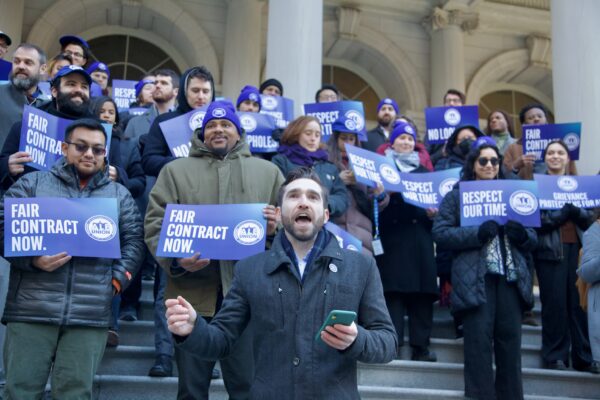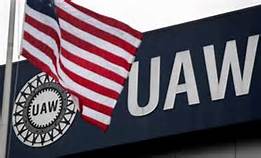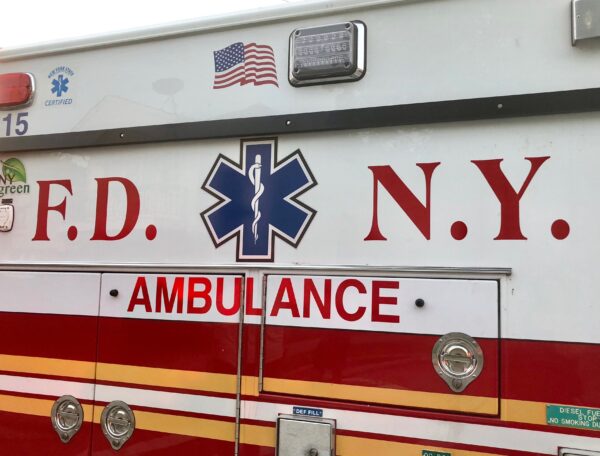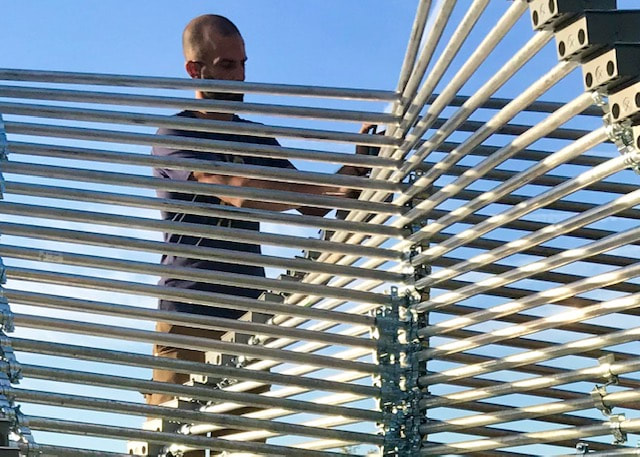
NEW YORK, N.Y.—The metal crossbars shimmer as the solar-powered lights below them cut through the evening’s cold rain and fog. Those crossbars, galvanized electrical conduit and aluminum tubing, twist upward in a double-helix pattern around a spine whose vertebrae are the conduit holders electricians call “Mae Wests.” The undulating outer edges are held together by staircases of gangboxes.
“It pops,” a worker at Socrates Sculpture Park in Queens says as the lights come on at dusk.
Titled “Muscle Memory,” the 10½-foot-tall sculpture on the Astoria waterfront was designed and built mostly by the Workers Art Coalition, a group of artists and building-trades members, says Barrie Cline, who teaches at SUNY Empire State’s Harry Van Arsdale Jr. School of Labor Studies and helped coordinate the project.
International Brotherhood of Electrical Workers Local 3 member Paul Vance was lead artist. Local 3 members Lowely Cheung and Sue Sheinen, both former students in Cline’s public-art classes, “contributed a lot of the crucial shoring up the structure and siting it in the park,” and the two women “spearheaded” having it illuminated by solar power.
The double-helix shape, Vance’s idea, was “DNA-inspired,” Cline says.
The project was intended to show workers’ “material intelligence,” their collective knowledge and teamwork, and seeing materials in a different way. The networks of conduit electricians build on the job “can be really beautiful,” says Cline, but they’re usually covered up by walls.
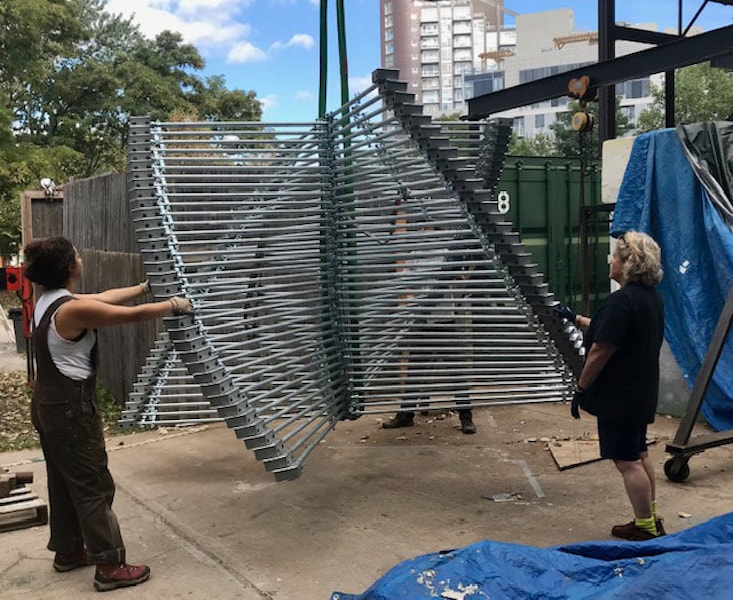
The spiraling-ladder shape, the Workers Art Coalition says, was intended to evoke Sherry Arnstein’s Ladder of Citizen Participation, a 1969 guide to public voices in decision-making whose eight steps rise from “manipulation” to “citizen control.” Vance had done a similarly shaped sculpture for a 2018 show on that theme at the Lower Side Side art space ABC No Rio.
Designing and building it involved creating something that would work as art, be emotionally accessible to the public, and be structurally sound and safe enough to be out in the open for six months. They didn’t want it to be “Art with a capital A” isolated on a pedestal of reverence, says Cline, but they also didn’t want kids using it as a jungle gym.
“It’s not about preciousness, it’s about safety,” says Chris Zirbes, manager of the Socrates Park studio where the sculpture was fabricated. “We don’t have guards like MOMA,” the Museum of Modern Art.
They tested its durability, he says, by “getting four people to climb it at once. It didn’t break.”
That was one place where the workers’ and park staff’s experience came in, says Cline. “They know how to figure out and judge what works in that kind of public space.”
While Vance was lead artist, she says, credit was given by “distributed authorship,” so that people who helped build it and suggested ideas or ways of doing things would also be recognized. This was about “valuing how things are produced,” Cline explains, in contrast to the usual practice of naming only one individual artist, or, on a more extreme level, the art-world stars who hire lesser-known artists for low wages to execute their concepts for paintings or sculptures.
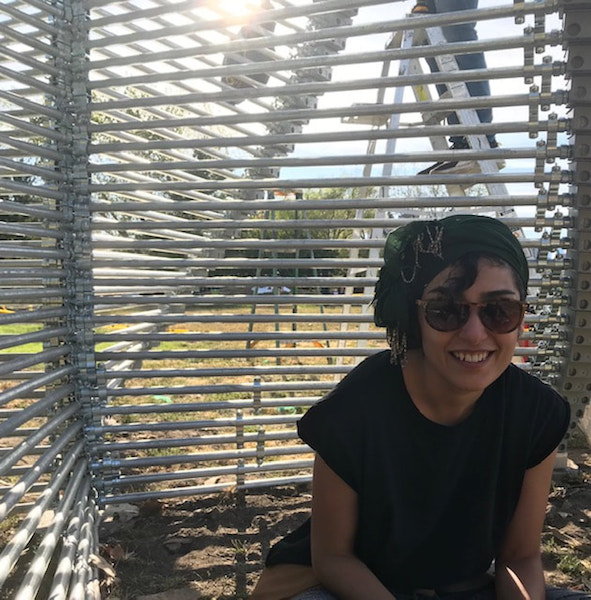
In addition, Cline says, there hasn’t been much representation of workers in U.S. art since the federal Works Progress Administration’s public-art projects in the late 1930s.
“What does a 21st-century monument look like when made by workers?” she asks.
“It feels good to design, collaborate, and participate in something in public space that shines a light on a particularly interesting group of people and workers who are constantly under-appreciated and misunderstood,” Vance said in a Workers Art Coalition statement.
“The union provides me with a living-wage job. That is the ‘bread’ part for me, and working on art projects is the ‘roses’ part of life,” said Lowely Cheung, who installed the solar panels for the lights along with Sue Sheinen.
Legion Lighting, a Brooklyn lighting manufacturer that has worked with Local 3 for more than 70 years, developed portable solar floodlights for the site after being approached by Cheung and Sheinen. People with smartphones can use QR codes to listen to a sound collage of oral histories by Local 3 members.
Cline says she doesn’t know what will happen with the sculpture when its six-month term in Socrates Park is up in March, but would like to see it find a permanent home.




